EVERYTHING YOU NEED TO KNOW ABOUT HARMONY PROTOCOL
What started as a means to correct the anomaly of the 2008 financial crisis has snowballed into a mega industry that the likes of IBM,Facebook,Walmart etc are not sleeping on this trend.
The enormous possibility that the technology behind bitcoin offers are too great to be ignored.
The history of digital money dates back to the early days of the internet, here is David Chaum and his Digicash,many saw potential in it and even Bill Gates offered to buy the company for $100m that he might put it in his windows operating system so that everyone might be able to use this currency,Chaum refused and the company declared bankruptcy years after.We have others like WebMoney,E-gold etc.
The marvel of the blockchain,the technology behind Bitcoin has attracted the best of intellectual minds across disciplines ranging from economics,finance,cryptography,computer science,arts etc. it is said that most of the world’s brightest minds are either working on AI or blockchain.
It is faster to fly $1000 from China into USA than to transfer it via the current systems. Remittances account for up to 25% of foreign currency flow into most developing nations.
Meet James,he lives and works in the USA and he is about to send $500 dollars to his mother in Romania.
Here are some steps that he must follow
1.He contacts his bank to see the option that they have,he is told his transaction will cost him $80 and will take 3–4 days to arrive.
2.He reasons within himself 3–4 days is a long time, he decides to use a remittance service like Western Union or Moneygram. He walks into their office and he is told the conditions and fees.
3.He is a bit tech savvy and tries some new remittance services like Transferwise,WorldRemit etc and they still charge a lot.
Studies had shown that over 10–20% of all remittances goes up as transactions fees and lots of time is wasted.
The major reason why money cannot be transferred over the internet freely like files and messages is because of the double spend problem.
For something to be money it has to satisfy a number of conditions :
acceptability,durability,verifiability,not fakeable,,scarce,fungibleand backed by something.
When Alicehas a file,he can send a digital copy to Bob his friend and to as many friends but digital cash is not like that,if this is possible with digital cash,then that will be the ruin of our world as money will no more have value as it can be printed out of thin air,no one will work again.
Another problem is the issue of the unbanked,there are more smartphones in our world today than people. One may wonder why with the advances in fintech,mobile computing, internet and broadband penetration,many are still unbanked and therefore excluded from the benefits that comes with banking.
From the difficulty of the KYC ,AML ATF, process(many don’t even have proper identity documents ) to the amount of cash transacted(most in live on $1 per day,hardly transact with banks),many banks are unwilling to invest to see many banked.
Another issue is the one of third party intermediaries. In the case of James,the money has to leave his bank to the central bank in his country of residence take some time before getting to the central bank and then to the bank of his mother after much time delays and lots of transaction costs.
Many third parties stand in the way of almost all of life’s dealings,while the benefits are awesome,they come with a lots of bottlenecks.
Amazon Kindle offers authors a market to sell their books for a fee,their charge the author more per book,also those who buys these books cannot resell them if they choose.
Spotify acts an intermediary between artistes and consumers,they charge a lot and one can be taken off their platform anything.
The issue of intermediaries in the value chain between content creation and content consumers is bad as they charge high fees,they could kick anyone out of their platform,they possess too much power.
While it is easier to share files(music,video,documents,softwares) and messages across the internet,it is hard to do so with money because of the double spend problem.
The double spend problem is a scenario where a individual or group of individuals are able to spend their money more than once and only blockchains can currently solve this problem.
THE PROMISE OF THE BLOCKCHAIN
“Bitcoin will do to banks,what email did to the post office”
Many who grow up in the 21st century may have never stepped into the post office,gone are the days were letters took weeks,instant messaging has taken over.
The blockchain according to many is Web 3.0.
Web1.0,the first version of the World Wide Web,was just a means of sharing information and communicating with one another. The content on website were basic,one had to be a geek to own or operate a website.
Web 2.0,the current version,it transcend it predecessor,it offers various means of monetizing and offers a lot of markets.
Lots of development in content types (ranging from media,live videos etc),content management systems(like Wordpress,Wix etc),network speed(from 2G to 5G),social media networks and forums (Facebook,twitter etc) to search engines (Google,Bing etc).
It is riddled with hacks,censorship and data breaches,require annoying passwords everything etc but here comes Web 3.0
The blockchain proposes Web 3.0 a system where participants can share or contribute resources if any kind (computing,bandwidth,content etc) to the development of platforms and get maximum rewards for their contributions in order to forge ahead sharing economy.
It seeks to address the anomaly of data sovreignity which making companies have built off their fortunes on.
It promises to make users own their data and their works and decide what to do with it per time.
It proposes a system where anyone can. transact money with anyone provided they have a cellphone without the complexities of opening and operating a bank account.
It offers the possibility to discourage property thefts as the records of rightful owners of land,houses,cars etc are time stamped on the blockchain for all to see.
It envisages the possibility of ensuring our democracy as intact as the means and processes by which leaders are elected is seen by all.
Even the government of Dubai is seeking by 2020,to put all government dealings and operations on the blockchain for greater transparency and ease costs.
Some of the current applications of blockchain include file sharing(like siacoin,Filecoin),money remittance(like Ripplenet, Abra),Crowdfunding ,fundraising(using IEO,STO,ICO etc),social media(steem,contentos), Gaming(Enjincoin),Issuing financial instruments(like the World Bank issuing bonds,Shares,Debts etc),reward and loyalty apps(rewarding some effort ),decentralized finance(MakerDao,0x protocol,Lending services like Ethlend,OpenFinance,Compound finance etc),smart contract possibilities etc,the possibilities are endless.
PROBLEMS PLAGUING THE BLOCKCHAIN
The current applications of the blockchain technology are mind blowing and the possibilities are almost endless.
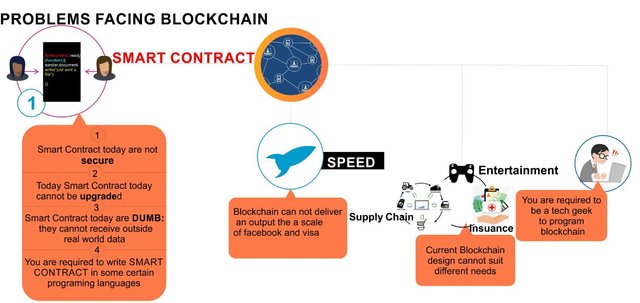
What started as just a means for researchers to communicate together 30 years ago has turned out to be the very core of human existence today, the internet has changed almost everything from the way we communicate, the way we do business and consume entertainment,education ,finance etc.
The issues with the blockchain include scalability,decentralization,security,interacting with real world data etc and unlike most internet infrastructure like Facebook,Google where billions of people may be using the network for different purposes per time and the network will still robust,they are slow and have low transaction throughput.
Most blockchain projects are still battling the zockoo triangle: scalability,decentralization and security.
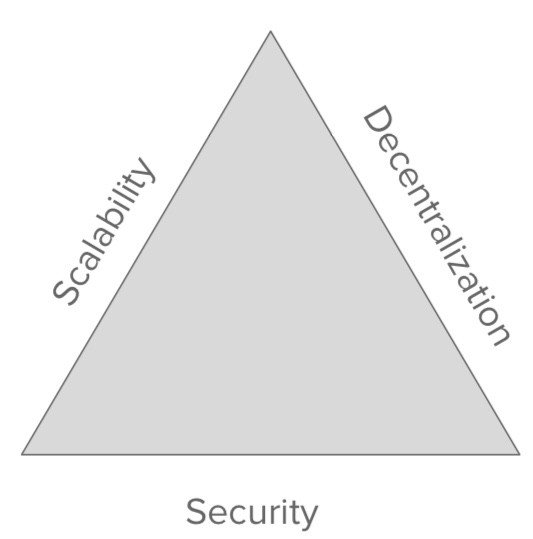
While most projects are currently secure(as over 51% of their network are honest),decentralized(the mining pool is almost not concentrated in a single region or controlled by a single force),they still face the scalability hurdle.
One major reason for this low throughput is their design at both the consensus layer and the network layer.
A basic blockchain achieves consensus or comes to agree on a transaction or state when one individual is able to solve for the mystery “puzzle” of that transaction and broadcasts its solution for all to further verify before all can commit the final true state to the blockchain.
So here is Alice trying to send 0.01 BTC to Bob,here are the processes involved.
1..The entire network has to verify if Alice. has 0.01 BTC and the accompany transaction fees in the address tied to him.
2.If yes,the transfer is done but since there is no central party to process the transaction,it will be done in a decentralized fashion.
3.Miners in the network just received the alert of Alice transaction and the accompanying fees he is paying,because the choice to confirm this transaction to all,James,Peter,Paul and others in locations scattered around the world choose to the one to get the reward.
4.They enter into race to be the first to find the cryptographic puzzle behind the transaction.
5.Peter was the first to find the answer,he broadcasts his solution to the whole network,which double check on his answer.
6.if Peter’s solution is certified true and honest,he and every one is prompted to commit that state(transaction) to the blockchain.
7.And this cycle continues for other transactions.
From the analogy above,some things are off.
1..Why should every miner in the network race to solve one puzzle?
2.Consider the time/cost ratio of broadcasting to all participants
3.Who is the network most likely to favor, probably those with more computing power in the case of Proof of Work blockchains or those with higher stakes in the network in the case of Proof of Stake coins.
Many have been researching and proposing alternative solutions like building a second layer on top of an existing blockchain like lightening network on bitcoin, plasma on Ethereum etc but researchers have the profit incentive,security and performance of most of this solutions in doubt.
Ethereum is researching on how to use zero knowledge proofs to confirm transactions,even Vitalik Buterin once suggested that Ethereum stores some of its data on the Bitcoin cash network.
At the consensus layer,a lot has changed,while Bitcoin Proof of Work is arguably the best in terms of security,one cannot rule out its downsides. An alternative solution is using stakes as a means to vote on transactions,miners are encouraged to stake to be able to confirm transactions but here again is the issue of miner centralization and concentration as those with more stakes can confirm more transactions and get more voting power.
An improvement in Proof of Stake is the Delegated Proof of Stake,EOS takes this approach,here leaders are selected from the onset of the network and other validator can choose which leader to be under. Here the network is partitioned,as. only leaders can confirm transactions and validator validate such transaction while this approach is good but many reports of miners collusion and corruption has hit the system and other downsides.
Another is Qtum,a blockchain that seeks to combine the best of bitcoin and Ethereum,it proposes an account abstraction layer as against the design in bitcoin or Ethereum but it still has a low throughput.
Other proposed solutions include blockchain pruning(trimming down the network size over time),fixed blockchain size using zero knowledge proofs as in coda protocol,changing the very form of database storage from levelDB to others as in avalanche,employing bulletproof as proposed in bitcoin, Directed acyclic graph as in IOTA and many more.
Since 2017,many projects have looking into employing sharding techniques to address scalability,can’t the system be partitioned into shards that can process transactions in parallelism and in a concurrent fashion but many existing sharding blockchains use Proof of work for ensuring shard security which is expensive and not very economical.
While this is a fine approach,many projects are still unable to solve scalability without giving up security or even doing both well.
Some blockchain projects currently working on these problems include Tezos,Ethereum,Avalanche,Cardano,EOS,Zilliqa,Dfinity,Harmony protocol etc.
HARMONY SOLUTION
Harmony protocol approaches scalibility by not only optimizing the layer one(consensus layer) but also the network layer(layer zero).
It employs Proof of Stake to reach consensus on transactions on the blockchain and partition the network by sharding.
When you are talking about shards,you have to think security,if the next leader of a shard can be easily predicted,then an attack is inevitable,to mitigate against this, one has to introduce Randomness that is ,verifiable,unpredictable and scalable and unbiasable
Harmony Protocol combines both verifiable random function(VRF) and verifiable delay function(VDF) to generate randomness during an epoch(a specified time interval).
If you have to gossip that transaction to all shards or nodes in the network,then it will be result in lots of communication overhead,to solve this Harmony employs Kademila routing which. is similar to distributed hash tables in torrent,so basically a shard has a table of peers that it knows the hierarchical structure so that it can talk to the peer that is nearest to the end origin each step of this process will take it logarithmically closer to the destination so it does not scale as N squared as the number of shards,it scales logarithmically which is a huge advantage.It uses both kademila routing and erasure coding to augment its network performance.
It employs state sharding,network sharding and transaction sharding which means each shard can attest for the state of the network,process transactions and network or communicate with nodes in a shard or other shards. To generate a proof shed they lock up this funds to ensure communication between shards in a secure way.
It splits the network into two shards : the Beacon chainsand child chains.
Beacon chains are responsible for generating secure randomness and storing the cross links hash from the other shards.
Cross links helps to provide cannonical truth about chains,shards and transactions.
The child chains are mainly involve in validating state,accounts and transactions,each shard takes and handles its own transaction and that multiples the translation per second output of the network.
Another key innovation is the introduction of Adaptive Threshold POS,Harmony recognizes the fact that shards can be corrupted either fully,slowly or adaptively,it acknowledges slow corruption in its design and so mitigate against this,it employs Adaptive Threshold POS.
It employs a mathematical function that computes the voting power per epoch and relative to the staking amount in the network such that no single shard can have nodes that can corrupt 1/3 of the network. The nodes in these shards are auto reschuffled using randomness at random intervals.
It employs the BLS based FBFT to attain consensus, each shard has a leader and validator nodes,the leader is chosen randomly,he broadcasts a message to the whole network and all validator nodes returns their BLS signature and he aggregates all the BLS signature into a multi signature that he then broadcast to all nodes for verification before it is finally committed to the blockchain.
It is compatible with the Ethereum virtual machine and seeks to implement ZkDai,ZkErc20,Fraud proofs etc in the near future.
It plans to be a decentralized data sharing platform in the future.
The goal is to have a blockchain that can serve 10 billion people and hence the name “Harmony”.
It published its whitepaper in May 2018,raised $18m in seed funding in September that year to build a prototype.
In Jan 2019 released a new whitepaper, open sourced their code and launched their first public testnet.
In June 2019,did an IEO on and launched their Mainnet.
It is currently running a reward program titled Pangea for individuals interested in. becoming validator nodes in the network.
TEAM
The team consists of lots of PhD holders and successful entrepreneurs who have built and sold businesses. Some of them include :
Stephen Tse: Google engineer, startup founder (acquired by Apple), UPenn CS Phd
Nicolas Burtey:VR startup founder with $10M VC investment and 40 people, Math BS
Alok KothariApple Siri NLP engineer, Carnegie Mellon AI MS
Rongjian Lan: Google Search engineer, Maryland PhD candidate
Minh Doan:Google Voice AI engineer, Olympiad champion, UC PhD candidate
Nick White: Zeroth AI specialist, Stanford EE BS & MSc
Sahil Dewan: Edtech startup founder, Draper Dragon, Harvard MBA, CS BS
PARTNERSHIPS
It has partnership with various platforms for the development of its ecosystem
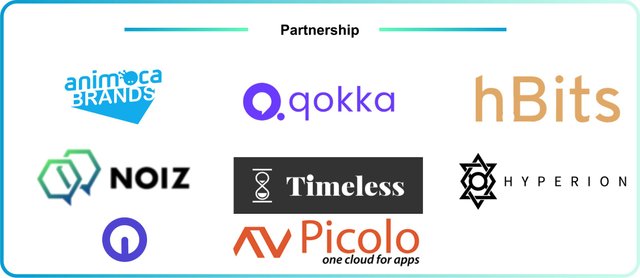
ROADMAP
2019 Q3
Support storage fee model (on top of computation gas)
Port the most popular apps (DAI, gambling, games)
Port prototypes of zero-knowledge proofs (zkDAI, AZTEC, Zether)
2019 Q4
Launch Partner pilots on Harmony network
Support WebAssembly
Complete libunion networking library & optimize fountain code (rateless erasure encoding)
Support light clients with fraud proofs
Token structure and utility
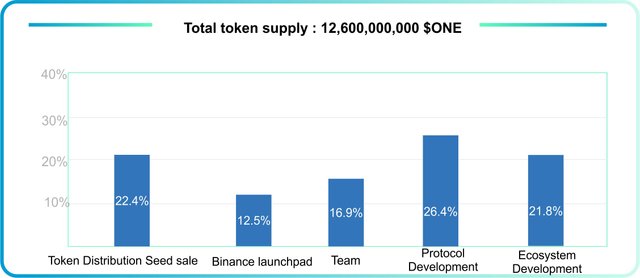
The Harmony token $ONE is used for the following.
1. The token is used to stake in order to become a validator on the network to earn block rewards and transaction fees. It uses Proof of Stake (POS) to fight off Sybil attacks.
2. The token is the single currency that enables for payment of transaction fees, gas and storage fees.
3. The token enables on-chain based voting.
EXCHANGES
You can obtain the token via crypto or fiat from any of the exchanges.
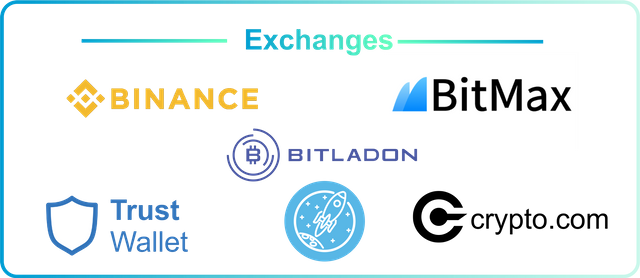
CONNECT WITH HARMONY
Medium Forum Instagram Facebook YouTube Telegram Discord Twitter
REFERENCES
- Harmony Protocol Website
- Harmony ProtocolWhitepaper
- Boxmining AMA with Harmony co-founder on YouTube
- Harmony Protocol Whiteboard series with Near protocol on YouTube
- Harmony FAQ on Medium